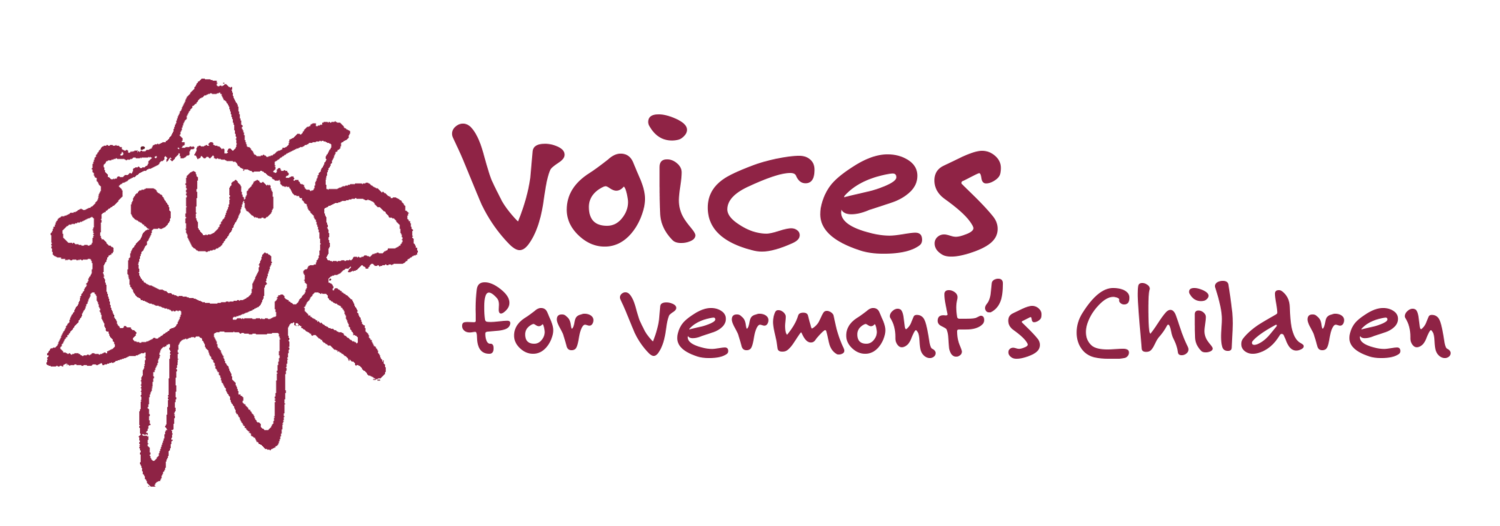Vermont Ranks 3rd in the Nation for Overall Child Well-Being Despite Rising Child Poverty
The 2012 KIDS COUNT Data Book, a state-by-state study on the well-being of America’s children, ranks Vermont as third in the nation for overall child well-being. At a glance, this is good news for Vermont, but a deeper look reveals that more Vermont children and families face economic hardship.
The new Data Book indicates kids and families across the nation are struggling financially. In Vermont, this trend is no different. In 2010, 17 percent of Vermont’s children were poor—a 13 percent increase from 2005. In addition, the rate of children whose parents lack secure employment rose to 31 percent in 2010.
“This data emphasizes that the recession continues to take a toll on Vermont children and families,” said Carlen Finn, executive director of Voices for Vermont’s Children. “Despite our high ranking among states, far too many families are struggling to make ends meet. Poverty severely limits the ability of families to provide essential developmental building blocks that allow our children to prosper and thrive.”
According to Paul Cillo, president of Vermont’s Public Assets Institute, “The decline in the economic well-being of Vermont children documented in this report goes hand-in-hand with another troubling trend we see in Vermont: a growing divide between rich and poor.”
Other Indicators Highlight Good News
Mirroring the good news nationally, Vermont’s health and education indicators show improvement, ranking first in health and third in education. These include a 50 percent decrease in the percentage of uninsured children and a substantial increase in the rate of high school students graduating on time.
“These positive trends illustrate we have a lot to be proud of,” says Melissa Christie, research associate of Voices for Vermont’s Children. “Vermont’s commitment to health and education has improved outcomes for kids.”
The 2012 Data Book has been updated with a new index that provides an even more robust and comprehensive portrait of how U.S. children are faring. It assesses states based on how they do on 16 indicators of child well-being—a change from previous annual rankings based on 10, reflecting the tremendous advances in child development research since the Foundation’s first KIDS COUNT Data Book in 1990. In addition to ranking states, the 16 indicators are organized into four domains: Economic Well-Being, Education, Health, and Family and Community.
Highlights from Vermont include:
Economic Well-Being: In 2010, 39 percent of children lived in households with a high housing cost burden, an 18 percent increase from 2005.
Education: In 2011, more students gained reading and math proficiency
Health: In 2010, only 2 percent of Vermont children were uninsured compared to 8 percent nationally and Vermont experienced a 46 percent drop in child and teen deaths in 2009.
Family and Community: In 2009, there was an 11 percent drop in teen births and, in 2010, there was a 56 percent decrease in families with children where the head of the household lacks a high school diploma.
The KIDS COUNT Data Book includes the latest data on child well-being for every state, the District of Columbia, and the nation. This information is available in the KIDS COUNT Data Center, http://datacenter.kidscount.org, which also contains the most recent national, state, and local data on hundreds of other measures of child well-being.
###
In addition to the domains tracked in the Data Book, the KIDS COUNT Data Center provides easy, online access to the latest child well-being data on hundreds of indicators by state, county, city, and school district. It serves as a comprehensive source of information for policymakers, advocates, members of the media, and others concerned with addressing the needs of children, families, and communities. By visiting the Data Center, users can download the complete Data Book, and create interactive maps and graphs.
For the most recent data on the economic well-being of children in Vermont, see the Vermont Child Economic Well-Being fact sheet. These statistics include state-level data on poverty, participation in SNAP (3SquaresVT), TANF (Reach Up), Medicaid (Dr. Dynasaur), the Free and Reduced Price School Meals Program, and households with food insecurity.
